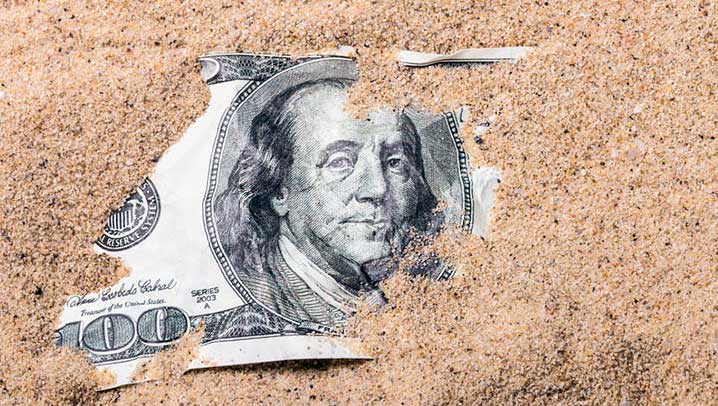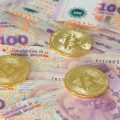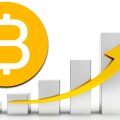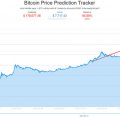
Countries around the world are committing unprecedented amounts of freshly printed money to preventthe upcoming financial crisis, and part of these funds goes into Bitcoin, devoid of fiat inflation.
Stimulating the economy
The United States Senate approved the package$2 trillion in stimulus measures at the end of March, and the House of Representatives has now passed a proposal from House Democrats for another $3 trillion to address the needs of Americans facing the highest unemployment rate of nearly 15%. In response to COVID-19, the Federal Reserve has undertaken a wave of quantitative easing unparalleled in its history.
As the monetary authority in chargefor managing the global reserve currency, the Fed uses quantitative easing as a means of filling the economy with fresh liquidity. Full control over the printing of money allows the Fed to print as many dollars as it wants, and then enter them into the financial system, buying assets on the open market.
Market watchers recall the consequencesThe Great Recession in 2008, when the Federal Reserve System withdrew assets worth more than $ 1.2 trillion in just four months to bring new capital to the markets. However, the scale of quantitative easing undertaken after the COVID-19 crisis overshadows everything that happened before, because the Fed does not limit the amount of money it plans to invest in the system.
Over the past 2.5 months, the Fed has purchased assets foramounting to about 2.8 trillion dollars. In contrast to the fallout from 2008, when the governing body limited its purchases to assets backing U.S. Treasuries, this time it has committed to buying riskier assets such as corporate and municipal bonds.
What should cryptocurrency investors expect?
New US dollars expected to helppublic companies and preventing shareholders from losing value. This new money is expected to increase the value of assets, but since most Americans do not own assets, the only result they will get is — This is a weakening of purchasing power.
Benny Hakak, CEO of LiquidApps, sees an opportunity for Bitcoin (BTC) to establish itself as a “store of value”:
«COVID Financial Crisis — this is the firstThe crisis that Bitcoin is experiencing as an asset class, and although some expected [Bitcoin] to perform similarly to gold, [the market collapse] has led to a sharp decline in the price of Bitcoin.
As the global economy began to open up, Bitcoin has recovered quite nicely, outperforming the S&P since their respective lows.
Since Bitcoin passed its halving event,which has historically accompanied a bull market, it will be interesting to see if Bitcoin can gain acceptance as an inflation hedge and [maintain its status as a] store of value.
Quantitative mitigation versus quantitative hardening
Compare the seemingly endless print of money,happening with bitcoin halving, an event that happens every four years and halves the production of bitcoins. For those who believe in cryptocurrency, this is yet another proof of Bitcoin's status as “the hardest money in the world.”
The demonstrable shortage of Bitcoin has attracted the attention of average investors and users concerned about money printing and the potential that could lead to runaway inflation.
Although the system can be "baked" withtransparency and lack of regulations; manager of crypto data platform CryptoCompare Avi Rostgen says that through his tracking, he discovered that the market was subject to strong volatility. A strong price surge in mid-March signaled mistrust on the part of investors — CryptoCompare counted 11,000 trades per second between March 12 and 13.
Rosten says that at that time everyone was flying away fromrisky assets to the US dollar, and Bitcoin was no exception. The CryptoCompare manager added that now is the right time for the first cryptocurrency to prove its value as an asset:
«We are probably seeing increased interestdue to the excitement surrounding the Bitcoin halving as well as record exchange volumes on the spot market. Our review of the exchange in April showed that April 30 had the second highest spot market trading volume in Crypto history.
The US may be at the epicenter of a financial storm, butthis does not mean that other countries will not experience such symptoms. Quantitative mitigation measures, such as the recently proposed $ 3 trillion, have led currencies such as Brazilian real, Mexican peso, and South African rand to lose more than 20% of the value against the dollar since the onset of the coronavirus crisis.
Uncertainty after the crash in mid-Marchforced Bitcoin to take the place that historically occupied gold. While markets are gradually rising back from trenches, many countries are experiencing a second wave of coronavirus, which leads to interruptions in the recovery process.
The cyclical nature of history
We can calmly say that now is the 73rd year,The oil crisis is shocking all world markets. To stimulate the labor market, the United States and other countries are beginning to print money. And attention is again focused on scarce goods in the form of gold.
It is important that Bitcoin becomes gold. Fiat currencies are actively expanding their offer against the backdrop of BTC halving. But thanks to the meager offer, Bitcoin must maintain its value and grow.
This is the opinion of Mati Greenspan, analyst and founder of quantum economics:
“Now BTC works as a hedge againstinflation is like gold and silver. If everything goes according to the standard scenario, then after inflation of the dollar and other fiat currencies, Bitcoin will be able to maintain its value. ”
</p>
5
/
5
(
1
voice
)





